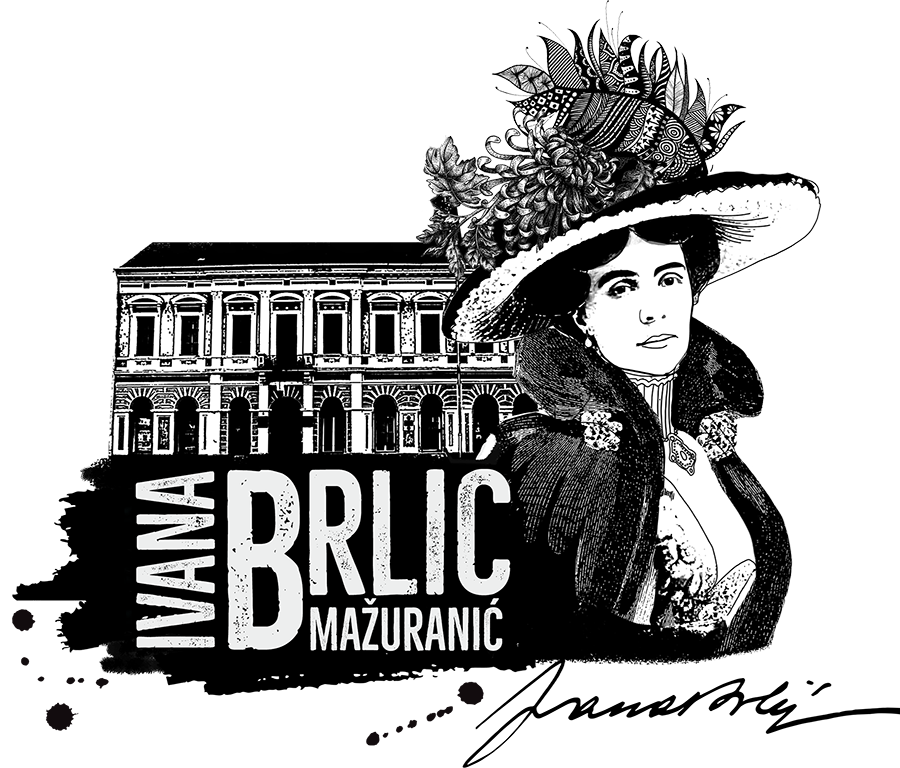Crossing Boundaries. Folklore, Fantasy and Identity in Contemporary Polish Literature for Children and Young Adults (similarities with Ivana Brlić Mažuranić’s Fairy Tales – selected issues)
I dedicate this paper to memory of Ivana Brlić-Mažuranić (1874- 1938), the heroine of our conference, twice nominated for the Nobel Prize for literature, called the Croatian Andersen and the Croatian Tolkien. The works of Ivana Brlić-Mažuranić – an outstanding author of fairy tales and fantasy works rooted in folklore and Slavic mythology ( here: pre-Christian beliefs of Croats) refer to fantasy in a broader dimension, including in the area of artistic creations of heroes who, in the context of axiological considerations, are the embodiment of human attitudes and feelings and, by showing their intersection with the everyday reality of the real world, also make it possible to define existential-ethical attitudes, eventually their inner transformation.
In such a context, the analyzed texts of Ivana Brlić-Mažuranić, provoke research of a comparative nature, so I would like to bring up some important issues related to the understanding of Polish fairy tales and contemporary Polish fantasy, in which “crossing boundaries” would become relevant in the perspective of broader considerations of folklore , fantasy and identity, especially when the recipient is a child ( in this context comparatively with the texts of Ivana Brlić-Mažuranić, we can consider the works of Maria Konopnicka, author of the first folklore-inspired Polish syncretic national fairy tale) (Fidowicz, 2017; Wierzbicki 1970)
It is worth adding in this perspective of analysis, when we consider common ideas about fantastic beings, crossing of worlds and their transformations not only in relation to oral and written literature, but also – in the narrow sense of the term – to folk and children’s literature (as an adaptation and transformation) (Ługowska, 1981; Wróblewska 2003).
Considering Polish fairy tales and contemporary fantasy narration as a text of culture(situated between folklore, history and social-cultural context) (Zipes, 1982; Tatar, 2016; Bacchilega 1997, 2013), analysis shows clear folk worldview, faith in the constant interference of supernatural powers, anthropomorphic vision of nature, unwritten moral standards, ideals of fair behavior (justice). However as anthropological documents these stories, shall also specify the dependence of meaning from context, reflect the realities of a given place and time and ideas functioning in the community/society in which it was created and is told (e.g. sociological approach, rural aspects and setting of the second half of nineteenth century Polish village (Baśń o krasnoludkach i sierotce Marysi by Maria Konopnicka); the moment of “transition” from the pagan to the Christian world, the figures of the Old Gods and the figure of the new God of Goodness – Samotność Bogów by Dorota Terakowska) It is worth emphasising that, in connection with the peculiar “Slavic revival” in contemporary Polish literature for a young audience (in the context of the works of Ivana Brlić-Mažuranić) , references to Slavic folklore are visible on many levels: in relation to proper names, in the creations of fantastic characters (e.g. Baba Yaga, the dragon), in the plot patterns, in the bestiaries used by the authors (e.g. gnomes, waterbenders, nymphs or ghouls), in the description of rituals (e.g. Midsummer’s Eve celebration (St. John – Świętojańska Sobótka), ritual games around the bonfire and the symbolism of fire) and in the pictures of nature (Wróblewska, 2014; Polak, Karwacka, 2016; Rudolf 2009).
In conclusion, the analysis and interpretation of the chosen texts show that contemporary Polish fairy tales and fantasy for children and young adults with references to folk tales national myths, popular legends and historical events combine with ”inner journey” of protagonists, rooted in the existential-ethical level – like in the works of Ivana Brlić- Mažuranić – becomes a metaphor of everybody’s destiny.
Primary sources: Maria Konopnicka, O krasnoludkach i sierotce Marysi (1896), Antoni Gawiński, Przygody Okruszka (1922), Janina Porazińska, Za górami, za lasami (1954), Ewa Szelburg-Zarembina, Bardzo dziwne historie (1988), Dorota Terakowska, Córka czarownic (1991),Samotność Bogów (1998), Andrzej Sapkowski, Wiedźmin (1990), Emilia Kiereś, Brat (2011) and Łowy(2012), Jacek Dukaj, Wroniec (2009), Dorota Combrzyńska – Nogala, Odysejki (2023), Cezary Harasimowicz, Mirabelka (2018), Anna Brzezińska, Opowieść z Wilżyńskiej Doliny (2002), Wit Szostek, Wichry Smoczogór ( 2003), Katarzyna Berenika – Miszczuk, cykl Kwiat paproci (2022).
References
- Bacchilega, C. Postmodern Fairy Tales: Gender and Narrative Strategies. University of Pennsylvania Press 1997
- Bacchilega, C., Fairy Tales Transformed?Twenty-First-Century Adaptations and the Politics of Wonder, Wayne State University Press 2013
- Fidowicz, A., Slavic worlds of imagination: fairy tales of Maria Konopnicka and Ivana Brlić-Mažuranić , in Freedom and Imagination in Children’s Literature, ed. by A. Wróbel – Czabanowska, M. Kotkowska, Kraków 2017
- Ługowska, J. Ludowa bajka magiczna jako tworzywo literatury, Ossolineum 1981
- Polak A. and Karwacka M. (eds), Fantastyka w literaturach słowiańskich idee – koncepty – gatunki, UŚ Katowice 2016
- Rudolf, E. Obecność słowiańskiego folkloru we współczesnej polskiej literaturze fantastycznej, in: Inspiracje ludowe w literaturach słowiańskich XI- XXI wieku, ed. I. Rzepnikowska, Toruń UMK 2009
- Tatar, M. The Classic Fairy Tales: A Norton Critical Edition (ed.). W. W. Norton & Company; 2016
- Wierzbicki J., Z dziejów chorwacko-polskich stosunków literackich w wieku XIX, Wrocław–Warszawa–Kraków 1970.
- Wróblewska, V., Przemiany gatunkowe polskiej baśni literackiej XIX i XX wieku, UMK w Toruń, 2003
- Wróblewska, V. Od potworów do znaków pustych. Ludowe demony w polskiej literaturze dla dzieci, UMK Toruń 2014
- Zipes, J. Fairy Tales and the Art of Subversion: The Classical Genre for Children and the Process of Civilization , Psychology Press 1982
